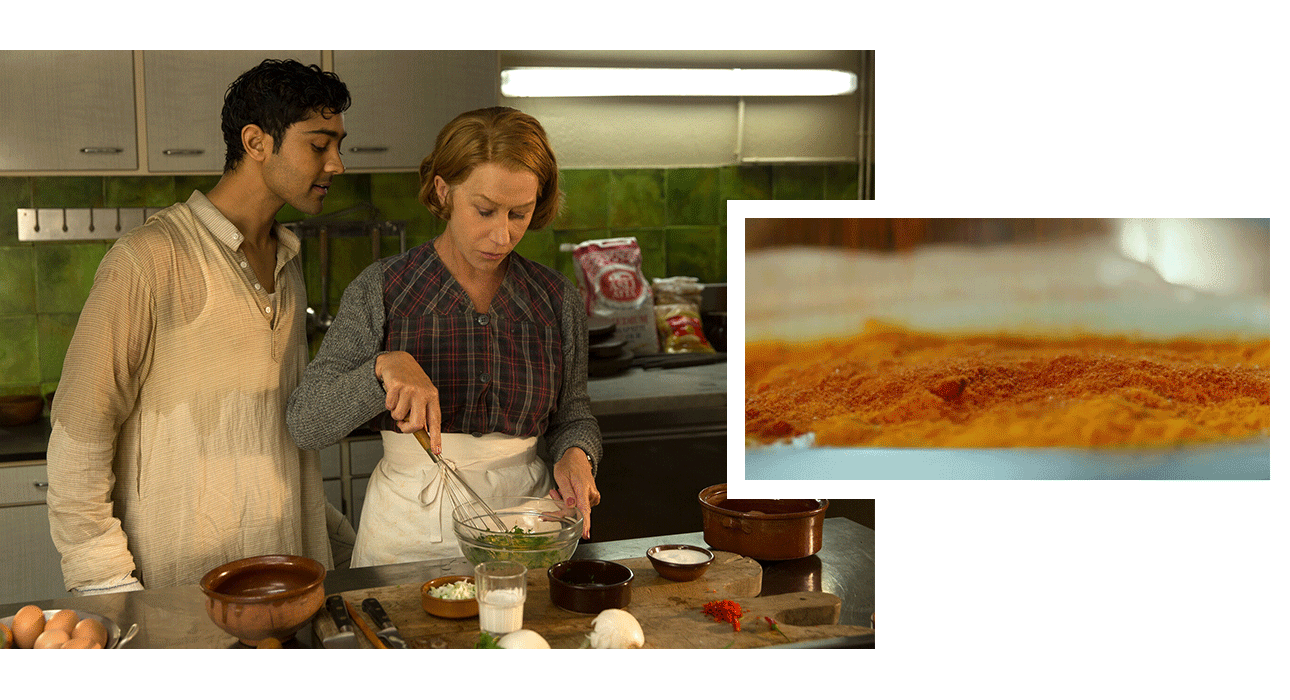Dear reader, we present to you our beauty columnist Inessa Tsarkova!
Inessa is an active nutritionist, gastroenterologist, therapist, naturopath and aromatherapist, health coach, integrative medicine doctor with a holistic approach. And now she will share with us her knowledge in the field of both physical and mental health, nutrition and much more.

Inessa Tsarkova
These are so many different sauces for every taste… Why do we need them?
“Sauces are the honor and glory of cooking. They are the orchestration and accompaniment of a delicious dish, allowing a good cook to show his talent,” said the distinguished gastronomic critic Maurice Edmond Seyland (known under the pseudonym Cournonsky), who lived in France at the beginning of the 20th century, about sauces.
But sauces weren’t always so delicious. The first mention of sauce dates back to the early 1st century AD in a poem written in medieval Europe. It tells of a farmer who invented a sauce by adding cheese, butter, and vinegar to crushed herbs. It became the prototype for pesto sauce.
History of sauces
It turns out that our ancestors began to use sauces to mask the smell of spoiled food, because in those ancient times there were no refrigerators, and it was difficult to keep food fresh for a long time. So, in Ancient Rome, a sauce with a rather bright taste and aroma, consisting of strong fish broth, anchovies and many aromatic herbs and spices, was popular for a long time. After adding it, it was difficult to determine what kind of dish was in the dish.
Sauces to give dishes a sharp and delicate taste began to be invented only in the 17th century. Moreover, their creators were mostly nobles and representatives of the nobility. So, the famous bechamel sauce was invented at the beginning of the 17th century by the Marquis Louis de Bechamel, who held an honorary position at the court of King Louis XIV and came up with a new and original taste for dried cod. His Majesty’s table. And, for example, the recipe for the famous mayonnaise (according to one version) was discovered by the chef of the Duke of Richelieu in the city of Mahon, when during a military campaign he had only a few raw eggs and olive oil on hand, which he had to destroy.
Over time, cooks began to fill sauces not only with aromas and flavors, but also with healthy ingredients. For example, this is how Roberto sauce (the prototype of modern Espanol sauce) appeared, which included healthy bitters (onion and mustard) and healthy fermented products (natural vinegar or dry wine). By the way, this sauce was also a favorite of the famous French writer and playwright Alexandre Dumas. He was sure that this sauce was “not only delicious, but also necessary for humanity.”

So what is the purpose of the sauces added to meals today?
— Add spice and impact to dishes, broaden the flavor palette. This can often be observed in special meals and restaurants. Or make them more appetizing and “desirable”, such as salads made with fresh vegetables and herbs that improve our nutrition.
— Increase the nutritional density of dishes (i.e., maximally saturate foods with valuable substances for the body) and increase their healing properties. Such advice is often given by nutritionists, naturopaths, and health nutrition experts. As the ancient Greek healer, physician, and philosopher Hippocrates taught, “Let food be thy medicine, and not let food be thy medicine.”
After all, as I have repeatedly written in my previous articles, bitter (for example, onion, garlic, mustard, hot herbs, spices) and fats (for example, vegetable oils or peanuts) are not only tasty and satisfying ingredients, but also suppliers of valuable vitamins, trace elements, natural antibiotics and polyunsaturated fatty acids. They are also activators of gallbladder contraction, help cleanse and restore both the liver (our main organ that maintains health) and the whole body (through the activation of the intestines). You can read more about this in the articles “The 5 biggest enemies of our liver” and “How to protect your liver during the New Year holidays: expert advice.”
— “Hide” the unpleasant smell of spoiled foodUnfortunately, this trend is also observed today, when unscrupulous sellers sell semi-finished and ready-made meals in stores and public catering outlets.
— Using sauces to give an appetizing taste to products that are not our specific food.. This is done to “trick” our taste buds and make us want to eat something that is not intended for us by nature. By the way, “What food does a human really need? Top 5 foods that harm us as a species.”
Remember, friends, which foods do we want to “flavor” first with sauce (or at least salt – the most common flavor enhancer)? That’s right: meat, fish, side dishes made from cereals or nightshade (e.g. potatoes). But when we eat juicy fruits, aromatic berries or nutritious fresh nuts, we don’t need any spices, right?
So, dear readers, let’s leave you with just two reasons why you should use sauces: to increase the nutritional value and healing properties of our food and to make “healthy” dishes (for example, salads made from raw greens and root vegetables) more appetizing.
It is especially important to use sauces at the beginning of the transition to healthy eating, when you still do not really want to eat the natural healthy foods that you are not used to. This is because unfortunately the sensitivity of our taste buds has been “spoiled” by pronounced salty, spicy, sweet and fatty accents. In general, the flavors found in industrial sauces are filled with ingredients that are not healthy at all.
What’s wrong with store-bought sauces?
Most industrial sauces are made up of refined and artificial ingredients that are not beneficial to our health and reduce the sensitivity of our natural receptors. First of all, they contain too much salt (I wrote about this in detail in my article “How does salt affect our body and how much salt do we really need?”) and sugar (I recommend you read the article “Are sugar and beauty compatible?”). For example, according to experts at the Daily Mail, one teaspoon of popular soy sauce brands contains half the daily value of salt. And two tablespoons of everyone’s favorite Heinz ketchup contain even more; as much as 6.8 grams, which is more than three times the recommended healthy dietary allowance. Manufacturers do not hesitate to add sugar to sauces. For example, the same teaspoon of popular sweet chili sauce contains more than a third of the daily value of sugar. Then we wonder why we have so many people with high blood pressure, insulin resistance, and overweight…
And often industrial sauces contain unhealthy starch, hydrogenated trans fats and many chemical additives and E-sugars, which are disguised under “reasonable” names, for example, “antioxidants” (at best, ascorbic acid plays, but at worst, sometimes butylated hydroxyanisole is used for this role, which is very harmful to the liver and kidneys). Or the well-known and very unhealthy flavor enhancer monosodium glutamate (or E-621). And many other flavor enhancers, dyes, flavors and preservatives, about which I wrote in my previous article how to learn to read food labels.
Top 3 healthy sauce recipes

Dear readers, I would like to share with you my favorite sauce recipes that make meals more appetizing and more nutritionally dense.
Homemade mayonnaise
– 300 ml of any unrefined vegetable oil (for example, Extra Virgin Olive Oil or Grape Seed Oil)
— 1 chicken egg or 5-6 quail eggs (for the vegan version you can use tofu cheese or fresh green peas instead)
– 1/2 teaspoon unrefined salt (e.g. natural pink Himalayan salt)
– 1/2 spoon of erythritol (melon sugar) or honey
– 1 tablespoon lemon juice
– 1-2 teaspoons of mustard (you can also make your own by mixing water with ground mustard seeds, vinegar and sea salt)
– pepper mixture – to taste
– chopped herbs or dried basil (optional)
All ingredients must be mixed in a bowl, lower the immersion blender into it, turn it on and gently raise it to the surface. Gradually, the mass should thicken and become creamy. If this does not happen, you can add another egg. And if the mayonnaise, on the contrary, turns out to be too thick, you can add water and mix thoroughly again.
Tahini sauce
It is made from ground sesame seeds. By the way, it was one of the first plants that people started to cultivate more than 5,000 years ago in order to obtain the seeds that they use to make sesame oil and paste. So the procedure is as follows.
— First you need to prepare sesame paste. Grind 100 g of sesame seeds (first lightly fry them in a dry pan until light golden color and pleasant aroma), add a tablespoon of sesame oil (any kind can be used).
— Take 2 tablespoons of the resulting sesame paste and add: lemon juice (3 teaspoons), Extra virgin olive oil (1 tablespoon), fresh garlic (1-2 cloves), water (2-3 tablespoons), unrefined salt to taste, finely chopped parsley, 1 drop of pure cumin essential oil (optional).
Peanut sauce for salads
– 1 cup raw cashews (rinse in soda water beforehand). You can use other nuts instead of cashews, but they all need to be soaked in water first. If you are going to add almonds or hazelnuts, you should first rinse them with boiling water and peel their skins.
– 4 large sheets of nori seaweed
– juice of half a lemon (I add 1 more drop of pure lemon essential oil)
– pink Himalayan salt – to taste
Place all ingredients in a blender, add water (enough to cover ingredients) and blend until smooth.
All of these sauces can be used as dressings in vegetable salads, in hot dishes and soups, as an addition to falafel, or as a dip for julienned raw vegetable sticks (such as carrots, broccoli or celery).
My dear readers, let’s love our bodies, let’s not be lazy and let’s prepare with love every day for both ourselves and our loved ones, let’s prepare only healthy sauces that enhance the taste of our healthy meals and increase their pleasure.
Source: People Talk
Errol Villanueva is an author and lifestyle journalist who writes for The Fashion Vibes. With a passion for exploring the latest trends in fashion, food, travel, and wellness, Errol’s articles are a must-read for anyone interested in living a stylish and fulfilling life.





